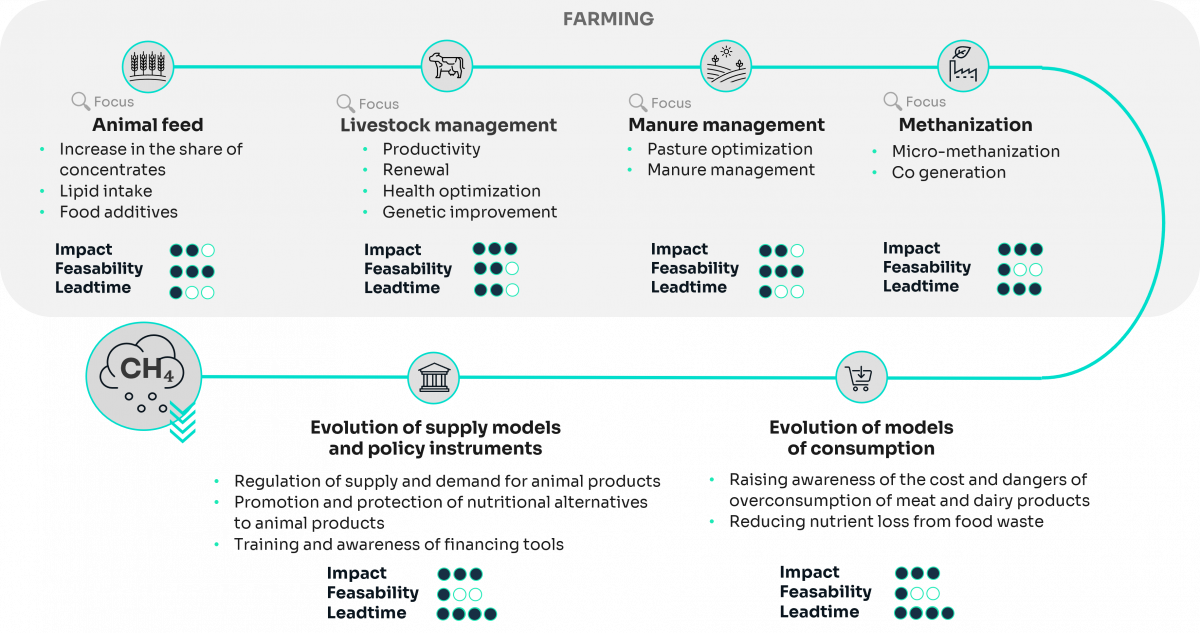SEC Division of Examinations Releases 2026…

Agriculture is responsible for more than 40% of global methane emissions. Reducing them is a key issue to tackle climate change.
At Sia, we support our clients in achieving their methane emission reduction targets and developing effective strategies to minimize their environmental impact.

Methane emissions originate from a wide range of sectors including agriculture, energy and waste. Accounting for roughly a third of global warming, methane is the second most significant greenhouse gas after carbon dioxide. However, despite having a shorter lifespan in the atmosphere, methane has a significantly higher warming potential than carbon dioxide. As a result, reducing methane emissions is a highly effective short-term approach to tackle global warming.
Agriculture, contrary to the waste and energy sector, does not have easily implemented turnkey solutions to limit methane emissions. Across the world, organizations have set less ambitious GHG emission reduction targets for the agriculture sector anticipating the difficulties opposed by the necessary changes in farming practices and farmed animal products demand required to reduce methane emissions. In the meantime, land use emission sequestration levers may also play an effective role as for mitigating GHG emissions.
The amount of methane emissions in agriculture is highly dependent on local livestock farming practices and the larger legislative landscape that steers its activities; therefore, methane emissions mitigation plans should be adapted to specific to each location and actor. Additionally, operational constraints should be considered in the making of methane emissions mitigation plans to solve conflicts that may arise from the combination of methane reduction actions and the continuity of agriculture activities.
The legislative landscape lacks specific national regulations targeting methane emissions from agriculture. However, we present in our study an overview of global and European regulations providing a framework for the sector, with coalitions, pledges and specific actions plans that are established.
We also present several levers to be considered when establishing methane emission mitigation plans:

At Sia, we believe that developing an optimal strategy for reducing methane emissions requires a thorough analysis of existing internal processes and real impacts in the field. This involves engaging in dialogue with operational staff and getting as close as possible to methane emission sources to understand reduction levers. Sia already supports its clients in their efforts to reduce methane emissions in the energy sector and waste management. By anticipating upcoming changes, we help them prepare for regulatory, data, and operational management aspects of methane mitigation.
Regulation Compliance
Data & AI
Operational strategy
Managing Partner & Climate Analysis Global Lead
Jean is Managing Partner and Climate Analysis Global Lead at Sia Partners. In charge of several business units for global transformations related to Sustainability and low Carbon strategies, AI/DS, Risk, Pricing & Revenues Mgt, Innovation & Strategic Roadmap.

Partner, Energy, Utilities & Environment | Paris
Charlotte is a partner in Energy, Utilities and Environment, and the Climate Analysis Center global lead.
Linkedin Email contact charlotte.delorgeril@sia-partners.com
